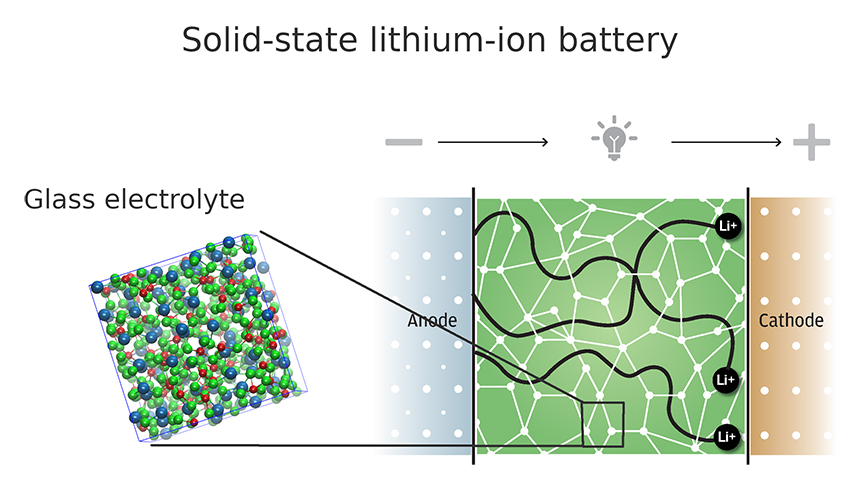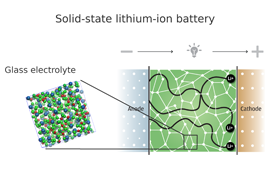New glasses can pave way for new battery standard

A new type of Na-based glasses may unlock the potential for a new battery standard that can contribute to the transition to a sustainable and affordable energy system.
By using quantum mechanics modeling, researchers from KTH and Karlstad university have investigated the structure of a new family of glasses. These glasses have superior ionic conductivity, and great potential to become excellent electrolyte materials capable of enabling the all-solid-state Li-ion battery.

New energy storage technologies that can meet the demands of a sustainable energy system require new energy materials. Today, the lithium-ion battery is the best performing and most promising of these technologies, in particular, the all-solid-state Li-ion battery.
The challenge of the all-solid-state battery is however the low ionic conductivity that is generally observed in solids and poor electrochemical stability.
The new family of glasses has great potential to overcome such shortcomings. In the particular case of glass Li3ClO, the researchers showed how the amorphous structure of this glass plays a major role on the high electrochemical stability in these solid electrolytes. They showed that it is possible to make the glass Li3ClO electrochemically stable against Li metal anode if less oxygen was supplied.
But most importantly, Na-based glasses may unlock the potential to use Na+ based chemistry for a new battery standard that can contribute to enable the transition to a sustainable and affordable energy system.
Read the article in Journal of Power Sources
Contact: Raquel Lizárraga, Department of Materials Science and Engineering, KTH (e-mail: raqli@kth.se)
